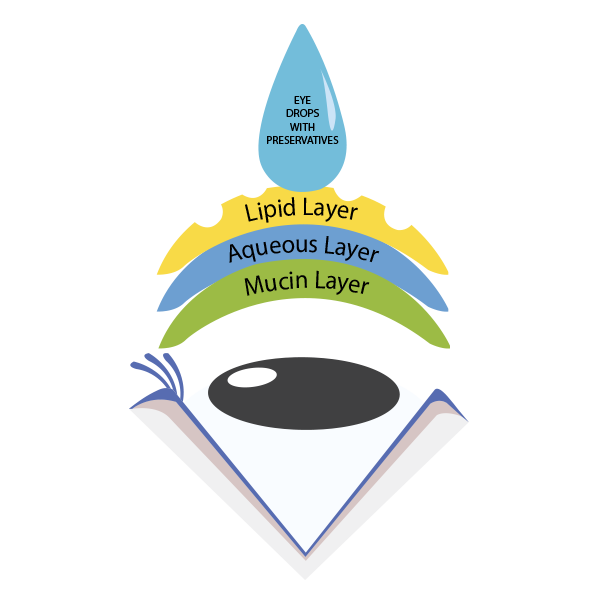
Is There A Cure?
At present, there is no cure for glaucoma but with early diagnosis, medication and treatment, the disease can be controlled4
Glaucoma medication helps to:-
Is There A Cure?
At present, there is no cure for glaucoma but with early diagnosis, medication and treatment, the disease can be controllled4
Glaucoma medication helps to:-
 Eye Drops
Eye Drops
Eye drops are one of the most common treatments for glaucoma and effective in managing the disease.

Preservative-free
eye-drop Options!
Large Clinical studies comparing preservative to preservative-free medications have found that patients experience less irritation and discomfort with these medications. Eye treated with preservative-free medications also appear to have healthier ocular surfaces as determined by doctors9.
At this moment, only beta blockers and prostaglandin analog (alone or in combination), can be obtained in preservative-free forms. Consult your doctors before using any eye drops.

The Effects of preservative in eyedrop
Preservatives in eye drops that contain Benzalkonium chloride (BAK)4 which can cause allergic reactions and instability to the tear film in the eye and other complications6. Preservative-induces adverse effects are therefore far from being restricted to only allergic reactions, and side effects are often very difficult to identify because they occur in a delayed or poorly specific manner. Care should therefore be taken to avoid the long-term use of preservatives6.
Glaucoma surgery
The type of surgery depends on the form of glaucoma and the severity of the disease6. It is important to note that the use of eye drops may still be required even after surgery1.
Laser Surgery
Laser
trabeculoplasty
To improve the drainage of fluid out of the eye
Laser Peripheral Iridotomy
To widen the angle for patients with angle-closure glaucoma
Incisional or conventional surgery
Standard Glaucoma Surgery
To make a new opening for the fluid to leave the eye
Minimally Invasive Glaucoma Surgery (MIGS6)
Using tiny, microscopic-sized tubes that can be inserted into the eye and drain fluid from inside the eye to underneath the outer membrane of the eye (conjunctiva)
 Eye Drops
Eye Drops
Eye drops are one of the most common treatments for glaucoma and effective in managing the disease.
Glaucoma Surgery
The type of surgery depends on the form of glaucoma and the severity of the disease6. It is important to note that the use of eye drops may still be required even after surgery1.

Preservative-free
eye-drop Options!
Large Clinical studies comparing preservative to preservative-free medications have found that patients experience less irritation and discomfort with these medications. Eye treated with preservative-free medications also appear to have healthier ocular surfaces as determined by doctors9.
At this moment, only beta blockers and prostaglandin analog (alone or in combination), can be obtained in preservative-free forms. Consult your doctors before using any eye drops.

The Effects of preservative in eyedrop
Preservatives in eye drops that contain Benzalkonium chloride (BAK)4 which can cause allergic reactions and instability to the tear film in the eye and other complications6. Preservative-induces adverse effects are therefore far from being restricted to only allergic reactions, and side effects are often very difficult to identify because they occur in a delayed or poorly specific manner. Care should therefore be taken to avoid the long-term use of preservatives6.
Laser Surgery
Laser
trabeculoplasty
To improve the drainage of fluid out of the eye
Laser Peripheral Iridotomy
To widen the angle for patients with angle-closure glaucoma
Incisional or conventional surgery
Standard Glaucoma Surgery
To make a new opening for the fluid to leave the eye
Minimally Invasive Glaucoma Surgery (MIGS6)
Using tiny, microscopic-sized tubes that can be inserted into the eye and drain fluid from inside the eye to underneath the outer membrane of the eye (conjunctiva)